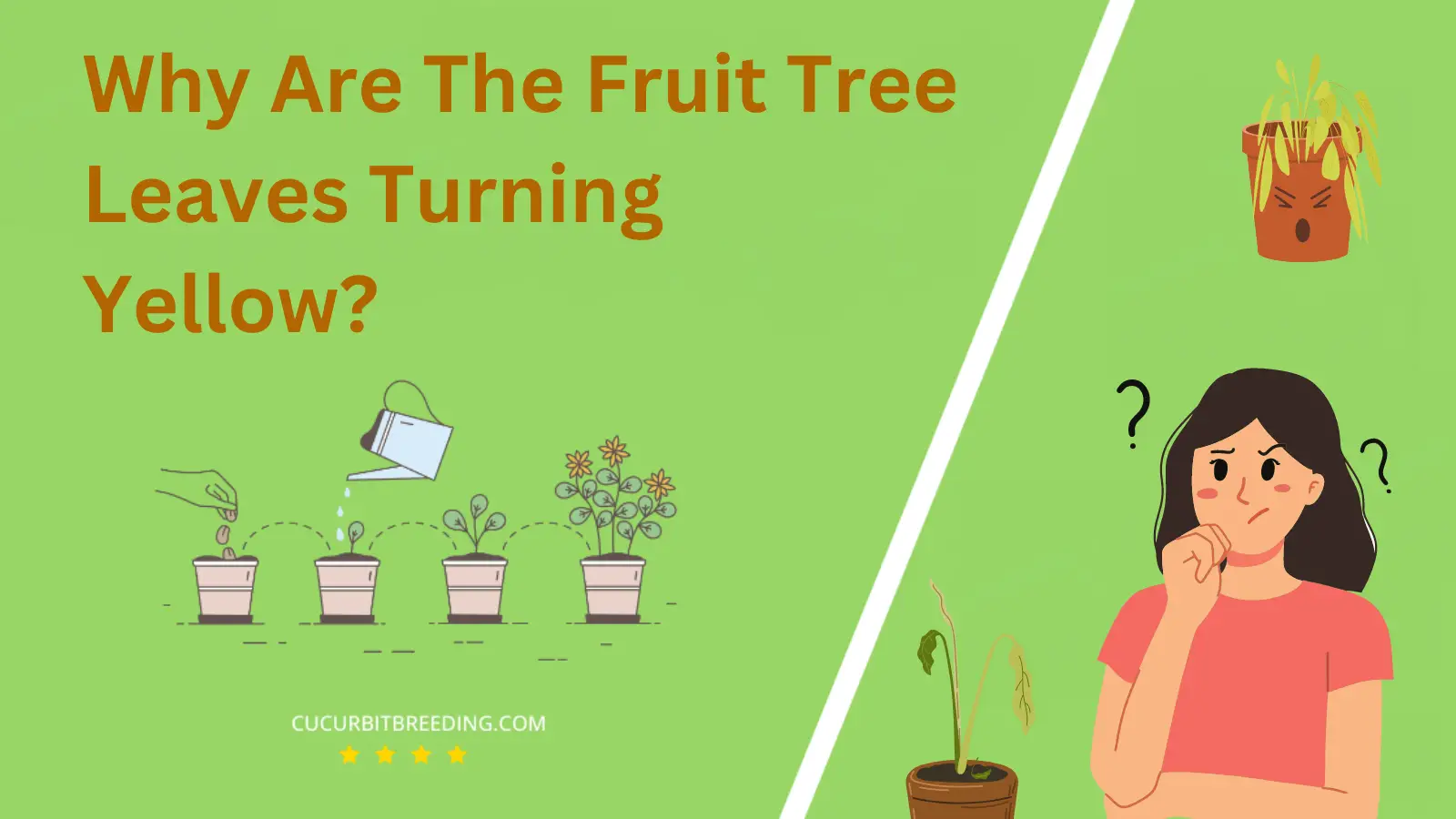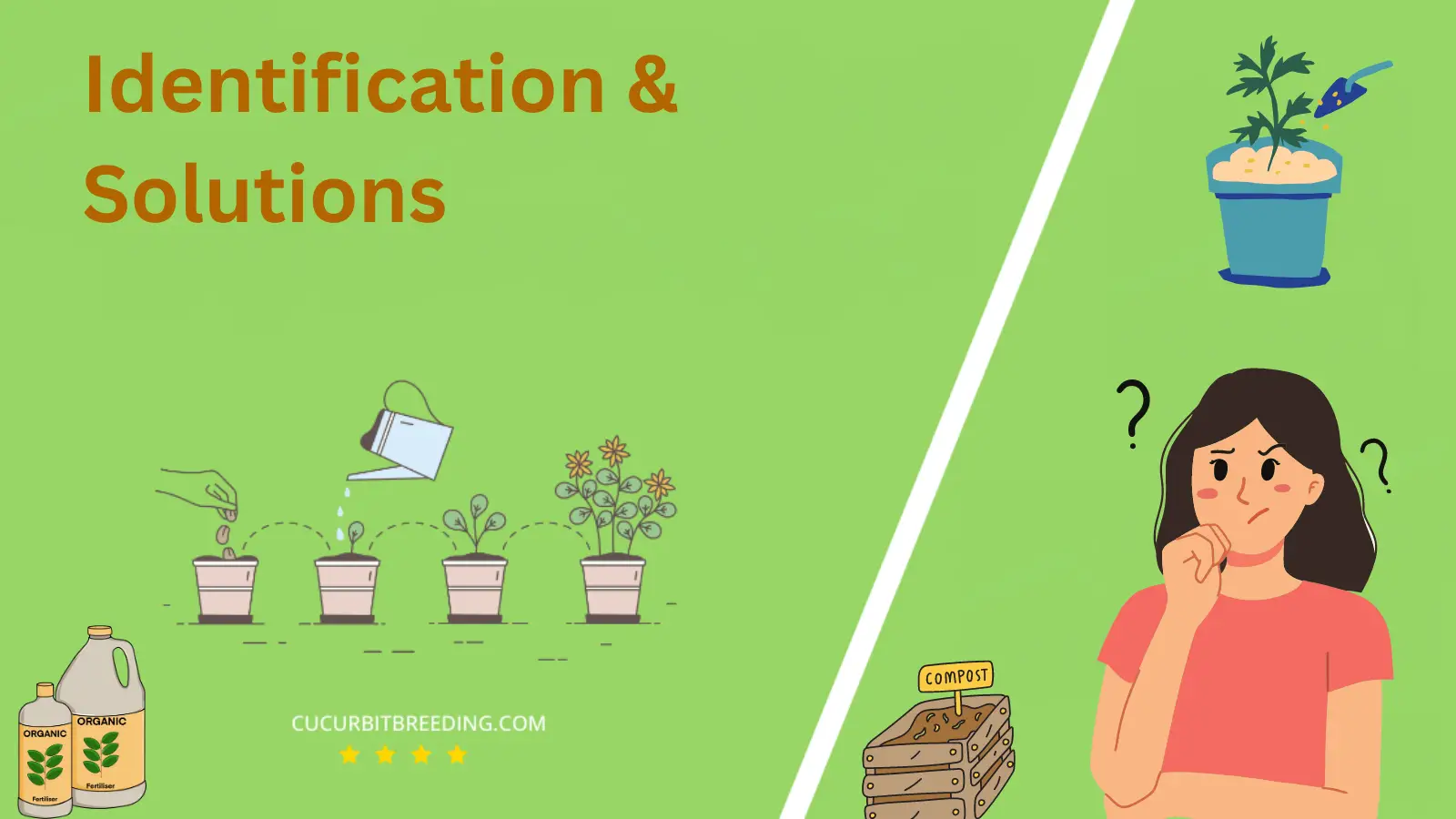
Are you strolling through your garden and wondering, “Why are the fruit tree leaves turning yellow?” This can be a baffling situation, especially considering the significant role these trees play in the charm of your garden.
When a leaf’s color start changing, it’s nature sounding off an alarm. Symptoms like these can stem from numerous causes, from nutrient deficiencies to pests. Knowing the source of the problem is crucial to address it correctly. Stick around as we delve into this green mystery together.
Why Are The Fruit Tree Leaves Turning Yellow?
1. Nutrient deficiency
| Description | Fruit tree leaves turn yellow due to nutrient deficiency, affecting the plant’s physiological processes. |
|---|---|
| Solution | Apply balanced fertilizer to the soil to address nutrient deficiency, improving leaf color and health. |
Yellow leaves on fruit trees can be caused by a nutrient deficiency. This usually occurs when a specific nutrient is either absent or insufficient in the soil, which results in the tree being unable to sustain healthy foliage. This condition specifically affects the leaves’ chlorophyll, which leaves them pale or yellow.
To resolve this issue, it is essential to identify which nutrient or nutrients the tree is lacking. Regular soil testing can provide this insight. Based on the results, the appropriate fertilizer should be applied. The fertilizer can provide the tree with the necessary nutrients it needs for healthy growth.
Mulching is another effective solution. A layer of mulch around the base of the tree can help conserve water and slowly release nutrients into the ground. This will help improve the overall soil condition. In extreme cases, trees may need iron or magnesium supplements.
Additionally, maintaining the correct PH levels in the soil is also important. Nutrients are most readily available to plants in soils with a PH level between 6 and 7. Regular PH testing and adjusting, if necessary, will ensure the optimal environment for nutrient absorption.
2. Watering issues
| Description | can cause nutrient deficiencies, leading to chlorosis and yellowing of fruit tree leaves. |
|---|---|
| Solution | Ensure proper watering to prevent yellowing of fruit tree leaves. |
Watering Issues Impact: Inadequate or overwatering can lead to yellowing leaves on fruit trees. When trees don’t receive enough water, the leaves can turn yellow as the plant struggles to conserve moisture. Overwatering, can also cause yellow leaves. Soggy soil can choke roots, limiting their ability to draw in essential nutrients leading to a yellowing condition known as chlorosis.
Solution: Regularly checking the soil around the tree for appropriate moisture can help identify and remedy watering issues. If the soil is dry, increase watering. If it’s wet, allow it to dry before watering again. If overwatering is consistent, consider improving the site’s drainage. Using a water meter can also help maintain optimal watering levels.
3. Pest infestation
| Description | The fruit tree leaves turn yellow due to pest infestation, affecting their physiological processes. |
|---|---|
| Solution | Apply organic insecticidal soap to control pests and prevent further damage to the fruit tree. |
Pest Infestation Impact: When a fruit tree is affected by pest infestation, it can cause noticeable yellowing of the leaves. This is because pests often feed on the foliage, sucking out the sap and nutrients, disrupting the overall health of the tree. This can cause stress to the plant, resulting in yellow leaves and subsequently, if left untreated, can lead to the death of the tree.
Solutions: Controlling the pests is crucial to the health of your tree. Start by identifying the type of pests that are infesting your tree – these could be aphids, spider mites, or scale insects, among others. Once identified, apply an appropriate eco-friendly pesticide or insecticidal soap. Implementing regular maintenance practices like adequate watering, proper fertilization, and yearly pruning can further support the health of your tree and make it less susceptible to pest attacks. It’s also beneficial to encourage the population of beneficial insects in your garden, such as ladybugs and lacewings, which can naturally control pest populations.
Remember, while yellowing leaves may indicate a pest infestation, they could also be a symptom of other issues such as nutrient deficiencies or water problems, so it’s important to assess the overall health and conditions of your tree.
4. Disease or fungal infection
| Description | The fruit tree leaves turn yellow due to pest infestation, affecting their physiological processes. |
|---|---|
| Solution | Apply organic insecticidal soap to control pests and prevent further damage to the fruit tree. |
When a fruit tree’s leaves turn yellow, one potential cause can be a disease or fungal infection. These kinds of issues can interfere with the tree’s ability to photosynthesize, leading to discoloration. Diseases or fungi negatively impact the plant’s general health, often inhibiting nutrient absorption or disrupting vital biological processes.
To remedy this, first identify the specific disease or fungus affecting the plant. Many local nurseries or agricultural extension offices can help with this. After identification, apply a suitable fungicide or disease treatment. Always follow the manufacturer’s instructions when using these products. Regularly remove any fallen leaves or fruit from around the tree to prevent reinfection. It’s vital to carry out these steps promptly to save the tree.

5. Environmental stress (extreme temperatures, excessive sunlight)
| Description | Apply organic insecticidal soap to control pests and prevent further damage to the fruit tree. |
|---|---|
| Solution | Provide adequate shade and temperature control to prevent yellowing of fruit tree leaves. |
Environmental stressors such as extreme temperatures and excessive sunlight can lead to the yellowing of fruit tree leaves. This condition, also known as leaf chlorosis, occurs when chlorophyll (the pigment that gives leaves their green color) begins to breakdown in response to the stress. As a result, the leaves turn yellow because chlorophyll plays a significant role in photosynthesis, the process plants use to convert light into food.
To remedy this situation, you need to mitigate the environmental stress on the tree. If the temperatures are too extreme, consider relocating the tree, if possible, to a more suitable area, or providing appropriate protection during very hot or cold conditions. For too much sunlight, consider adding a shade cloth to help block some of the sun’s rays. Also, regular watering and feeding your tree with a balanced fertilizer might help maintain its overall health and vitality.
6. Overwatering or poor drainage
| Description | Overwatering or poor drainage can cause the fruit tree leaves to turn yellow. |
|---|---|
| Solution | Improve drainage or reduce watering to prevent yellowing of fruit tree leaves. |
Overwatering or poor drainage can result in the fruit tree leaves turning yellow due to a condition known as chlorosis. Excessive water saturates the soil, leading to poor oxygenation and ultimately to root suffocation. When the roots become suffocated, they can’t absorb nutrients properly, including iron and nitrogen, that are crucial for the green pigmentation.
To correct this problem, start by lessening the frequency of watering your fruit trees. Ensure the soil drains well and is not waterlogged. Too-saturated soils may require amending with organic matter to improve drainage. Also, consider repotting the tree in a better-draining soil mixture or moving it to a higher, well-drained location if it’s in a flooded spot.
7. Aging or natural leaf shedding
| Description | The specific reason for a leaf turning yellow is aging or natural leaf shedding. |
|---|---|
| Solution | Increase nutrient intake to support new leaf growth and promote overall plant health. |
One common reason for the leaves of your fruit tree turning yellow is a condition known as chlorosis. Chlorosis indicates a lack of chlorophyll, the pigment responsible for the green color of leaves. This lack of chlorophyll is often the result of insufficient nutrients, particularly iron, in the soil.
When the plant has inadequate nutrients, its ability to produce and sustain chlorophyll is compromised, leading to a color change from green to yellow. The nutrient insufficiency can be due to a range of issues such as poor soil quality, poor drainage, or an imbalance in soil pH which can inhibit nutrient absorption.
To rectify this, you would need to amend the soil with the required nutrients. Start by testing the soil to determine the missing nutrients. You can then supplement these nutrients using specific fertilizers. For iron insufficiency, chelated iron or iron sulfate can be used. Remember to follow manufacturer’s instructions to avoid over-fertilization, which can harm the tree.
If the issue is poor drainage or pH imbalance, these will need to be rectified. Consider improving the soil texture by adding organic matter to enhance drainage, or use lime or sulfur to adjust the pH. Regularly monitor your fruit trees’ health to ensure optimal fruit production and overall well-being.